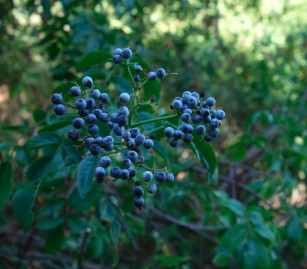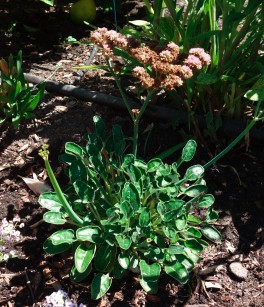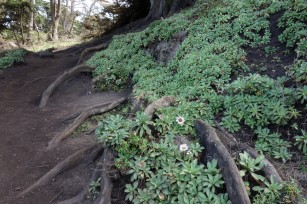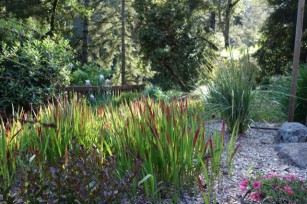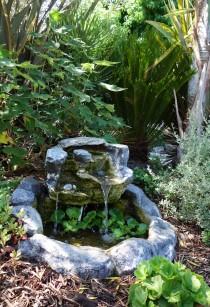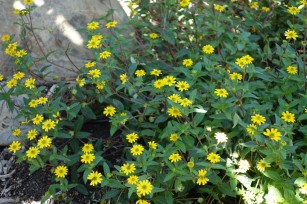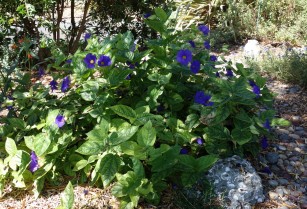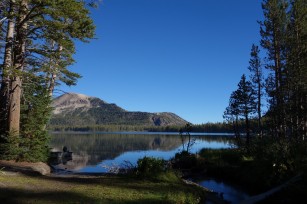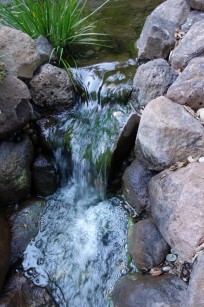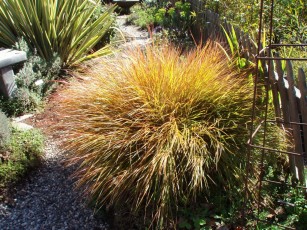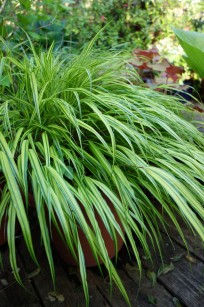I was on my deck recently with a friend who commented that everything smelled so good that it must be nice to just sit and enjoy the garden. I thought to myself "What? How can I just sit when there is so much to do?" That's when it hit me, Why do we create gardens if not to enjoy them? So as summer winds to an end 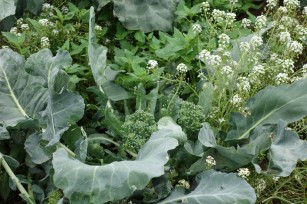 celebrate what you've created and just sit and enjoy the fragrance, sights and sounds of your garden.
celebrate what you've created and just sit and enjoy the fragrance, sights and sounds of your garden.
At the Santa Cruz County Fair last week there was plenty of inspiration to enjoy the fragrance, sights and sounds of a county fair. Before I even arrived I stopped at a broccoli field bordered by sweet alyssum. The fragrance was lovely and I knew the beneficial syrphid flies were doing their job as predators of aphids that might find a broccoli plant irresistible.
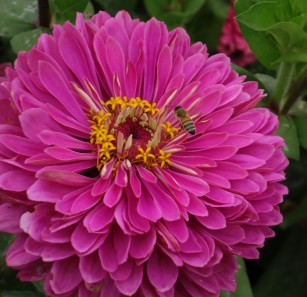
At the fair I always admire the colorful beds of mixed zinnias. I didn't see any swallowtail butterflies looking for nectar but I know it's one of their favorite flowers. Lots of honey bees did find the zinnias to their liking. Next year I'm going to try my hand at zinnias again. They are one of those old fashioned flowers that are easy to grow. Kids love that they come up so quickly and develop a flower one can really be proud of.
At the Farm History display old food processing equipment and jars caught my attention. I could admire the apple boxes with their imaginative labels for hours. An educational poster of old pictures from the late 1800's showed workers spraying horticultural oil on apple trees to eradicate apple scab. When DDT came on the scene, it was used until banned in 1973 but it is still being detected in water and fish. Organic apple growers utilize integrated pest management techniques now.
I love seeing the poultry, lamb judging, dairy cows and cattle and pigs but it was the 3 day old baby goats that had the biggest audience. Naturally, I'm drawn to the horticultural exhibits. Who doesn't enjoy the dahlia competition with every color and flower type represented? A dark magenta cactus dahlia was my favorite. These mammoth flowers take longer to grow and fewer are produced by each plant but they are so worth it.
After the bonsai exhibit and vowing to do better with my own collection, it was the roses that I circled repeatedly smelling each to decide which was the most fragrant. I'm partial to the scent of my own lavender Neptune and baby pin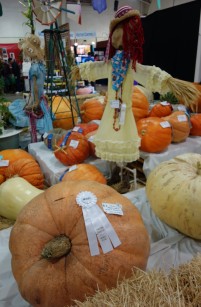 k Falling in Love but the winners at the fair were outstanding especially the white JFK.
k Falling in Love but the winners at the fair were outstanding especially the white JFK.
After the watercolor and fine art exhibit I pressed on to the agriculture building where apple pie and jams, beans, peppers, tomatoes, cabbage, herbs and other fruit and vegetable entries are displayed. The pumpkin judges awarded first prize to a giant specimen but many were close in weight. I know there is an art and science to growing these behemoths. Maybe someday I'll try my hand but I like the smaller eating varieties that are so sweet.
Back at home, I'm tempted to prune the spent hosta flower stalks but I'm taking my own advice and am going to just sit and enjoy the scent of the last of the jasmine blossoms. The Iceberg rose sweetens the air with the scent of honey. The mophead hydrangea blooms have taken on that tawny dusty rose shade that will last for many more months. The Anna's hummingbirds visit the abutilons every hour sipping nectar and I can see buds forming on the Autumnalis Flowering Cherry getting ready for it's second show of the year. Be sure to take time out and enjoy your garden. You deserve it.

